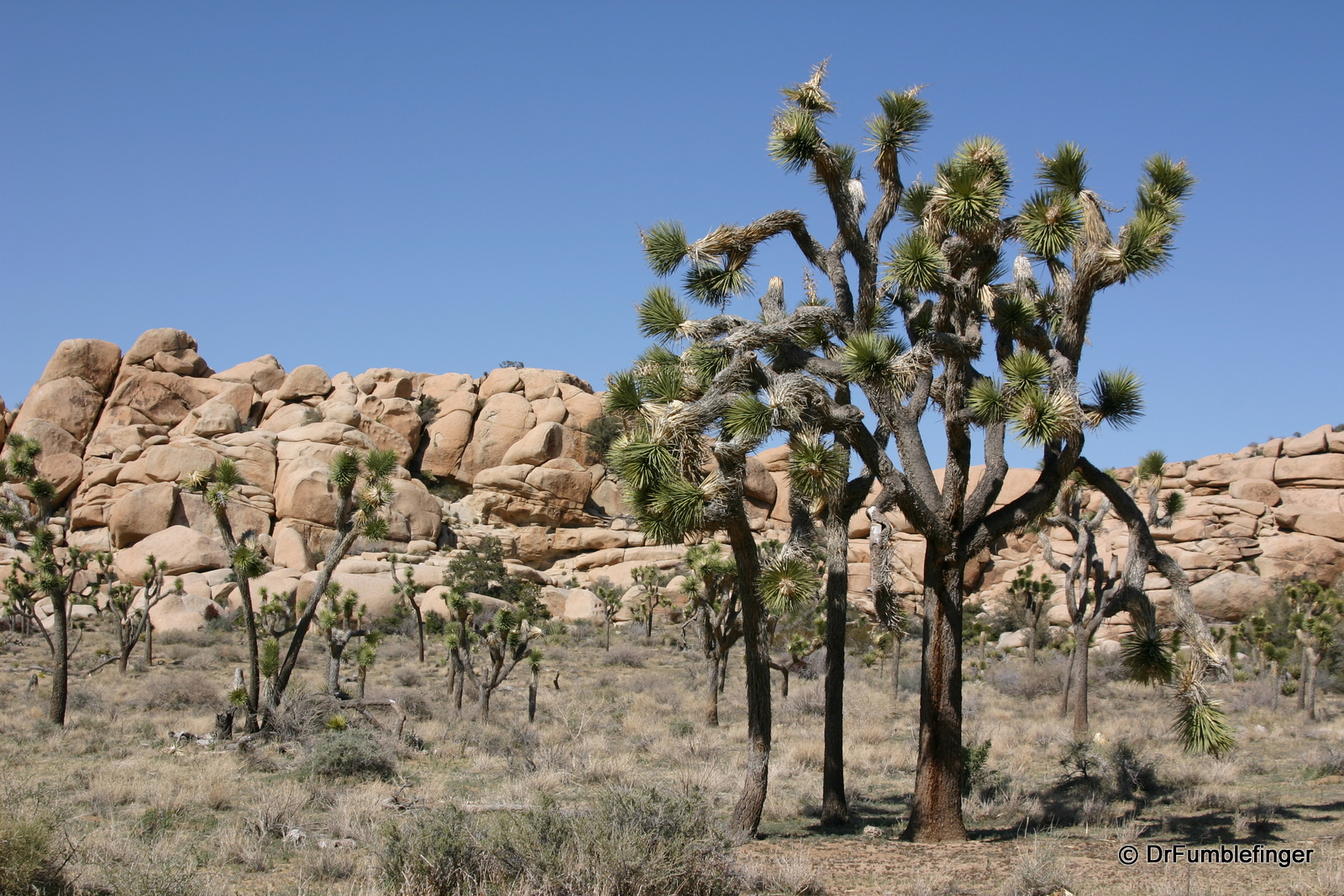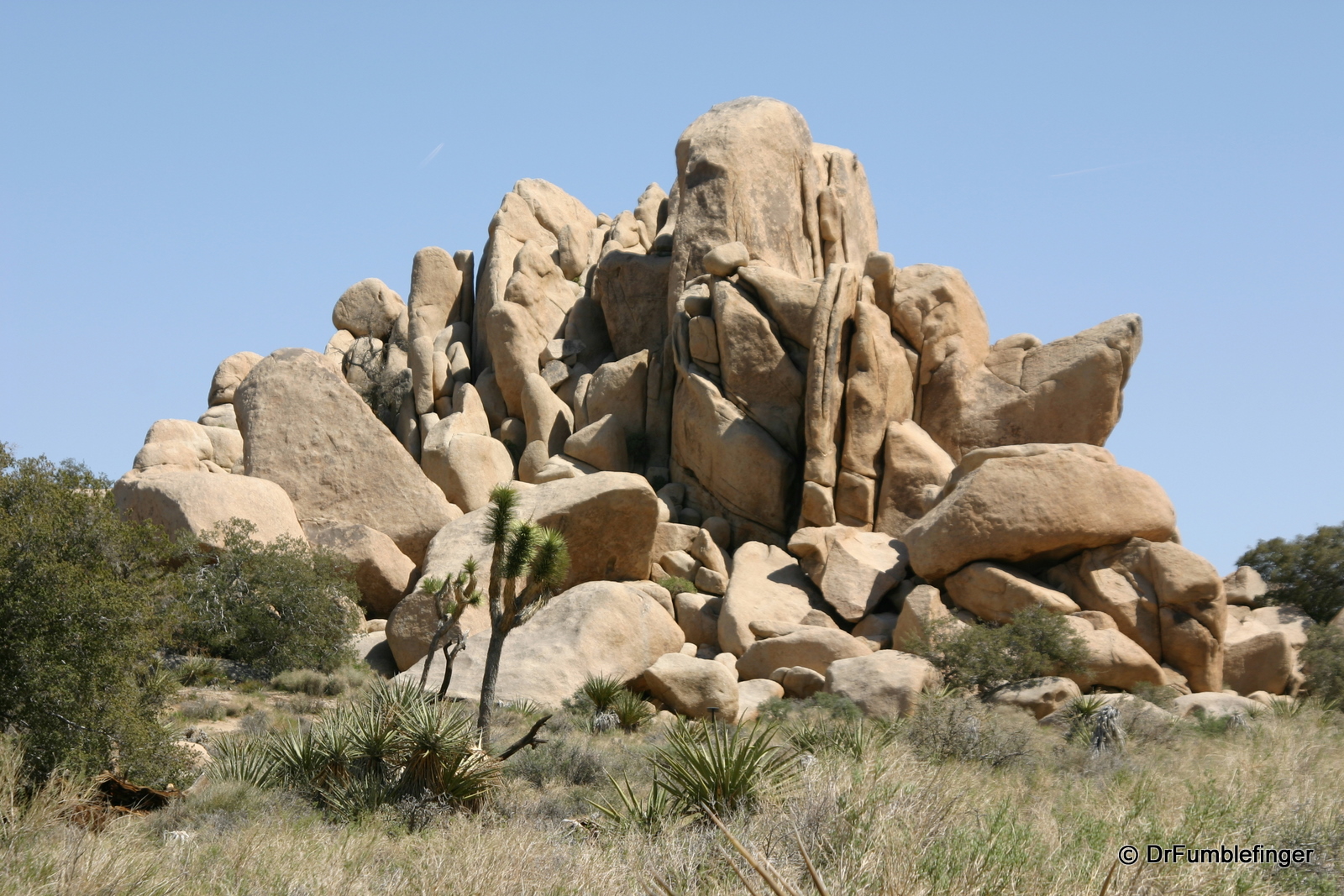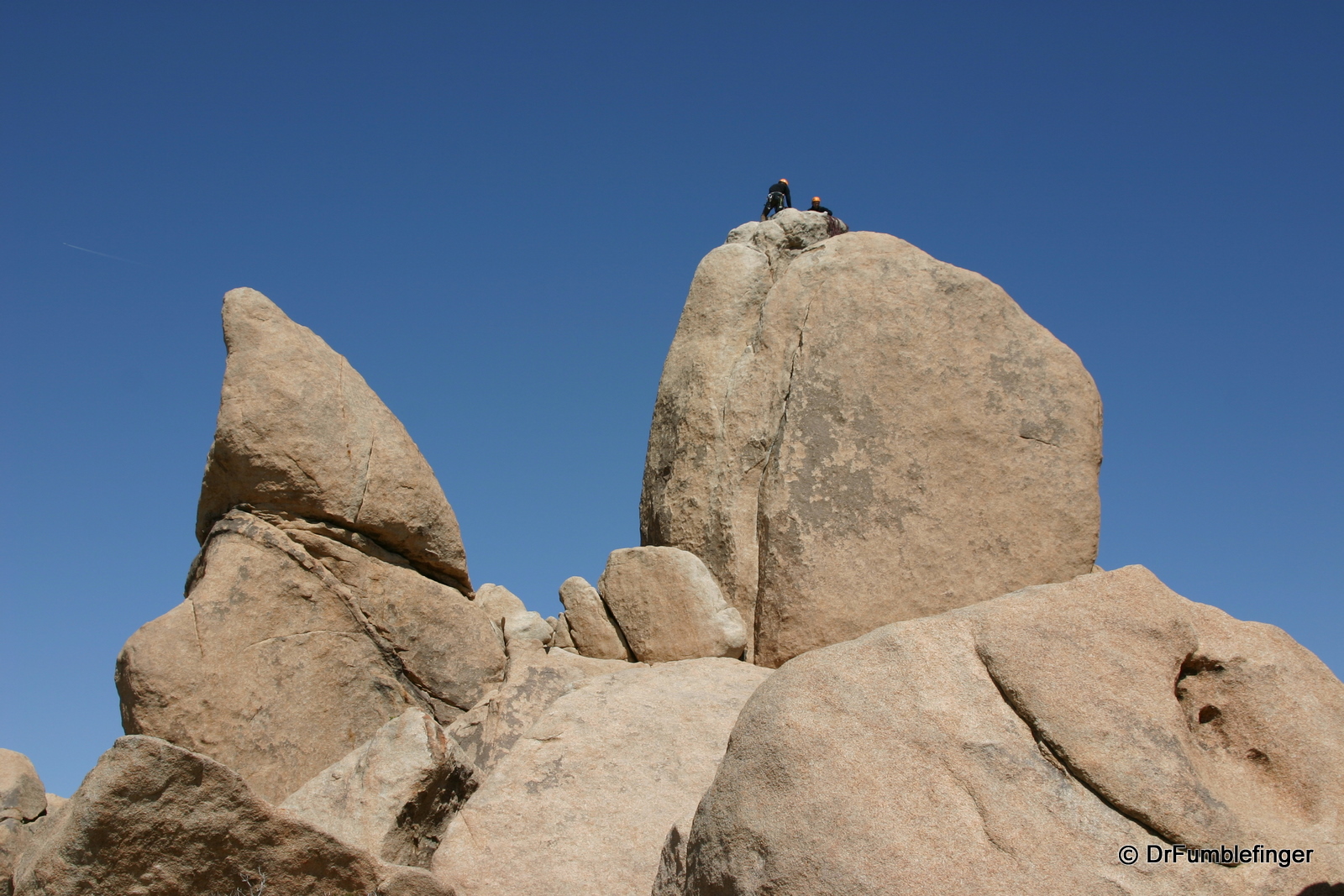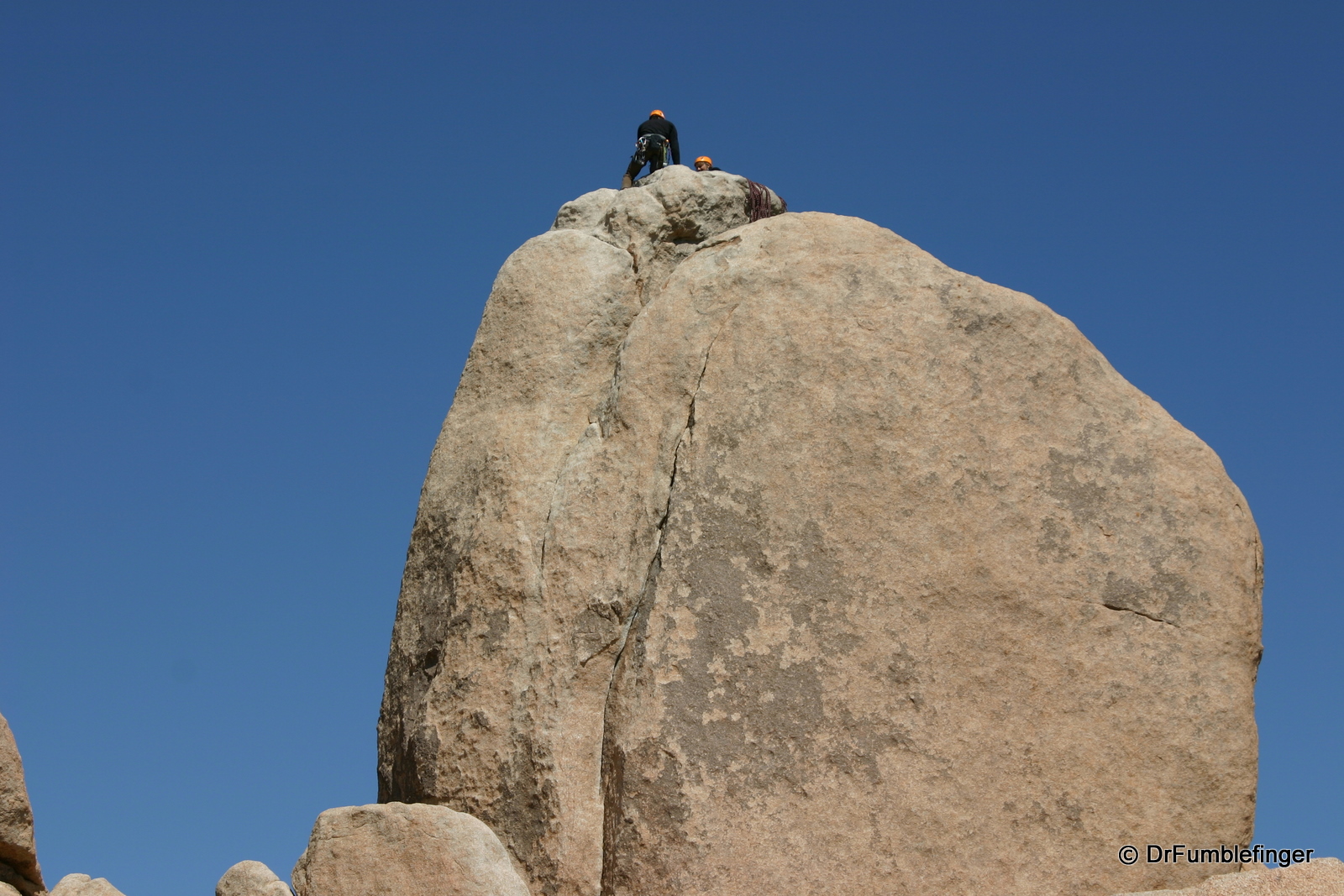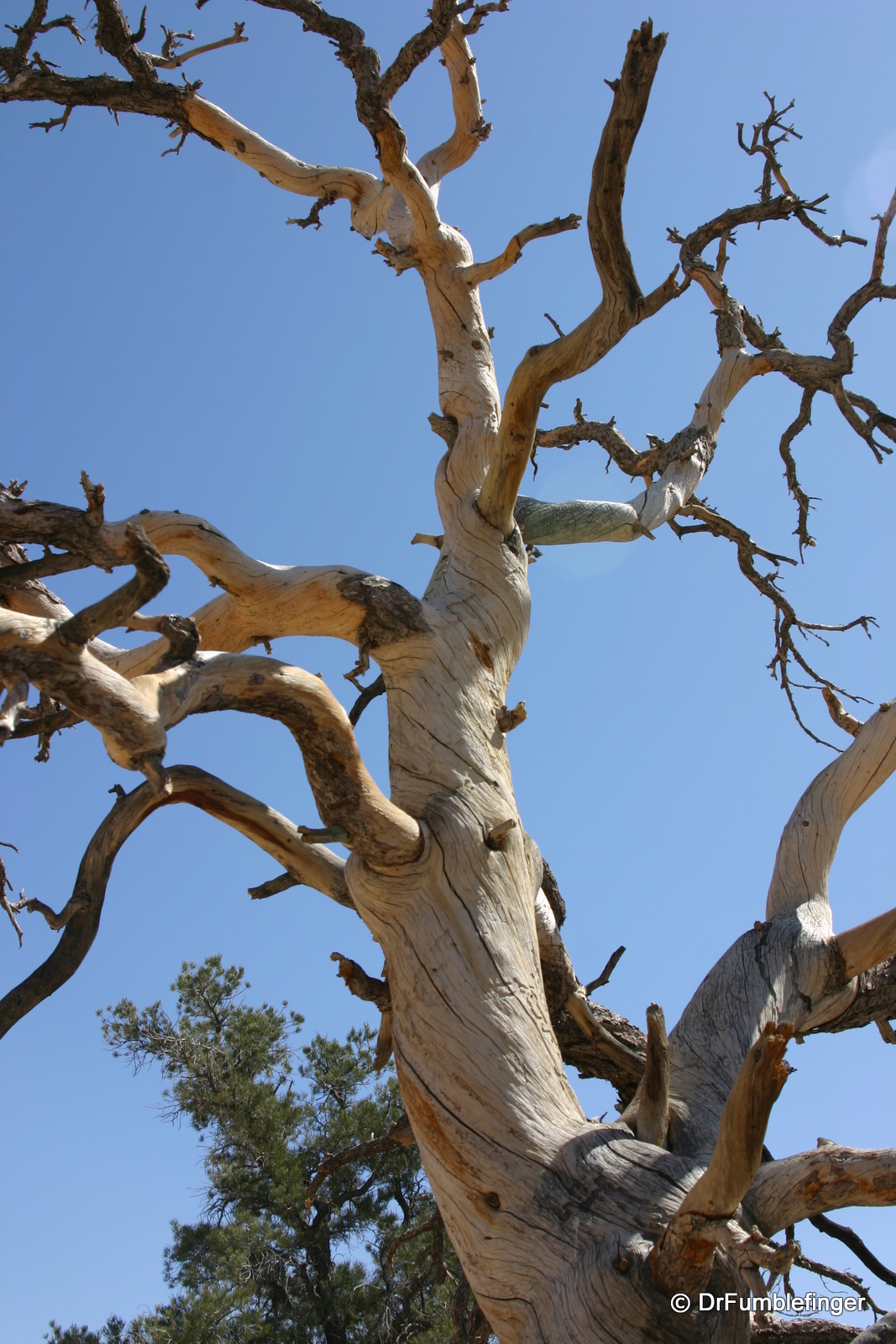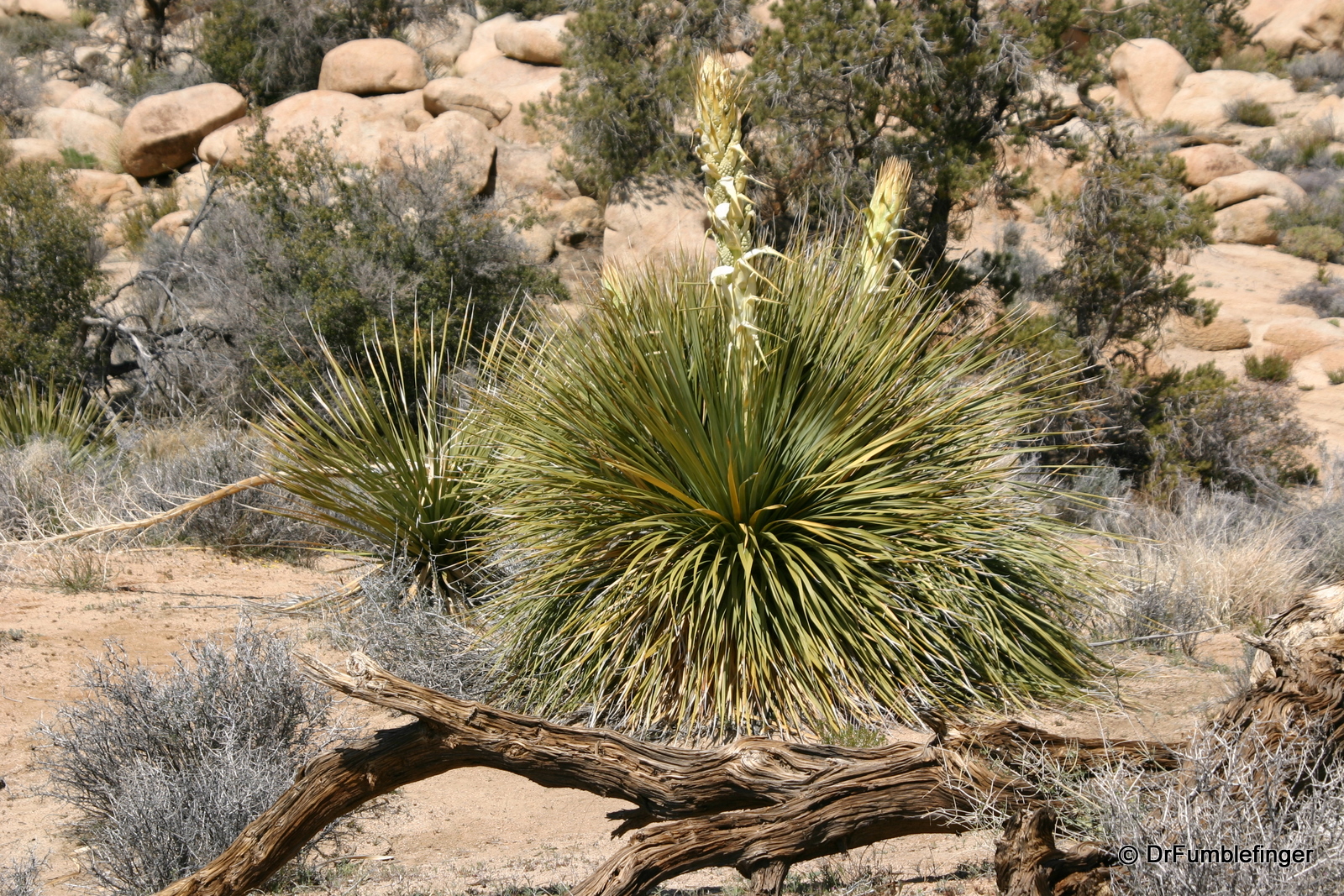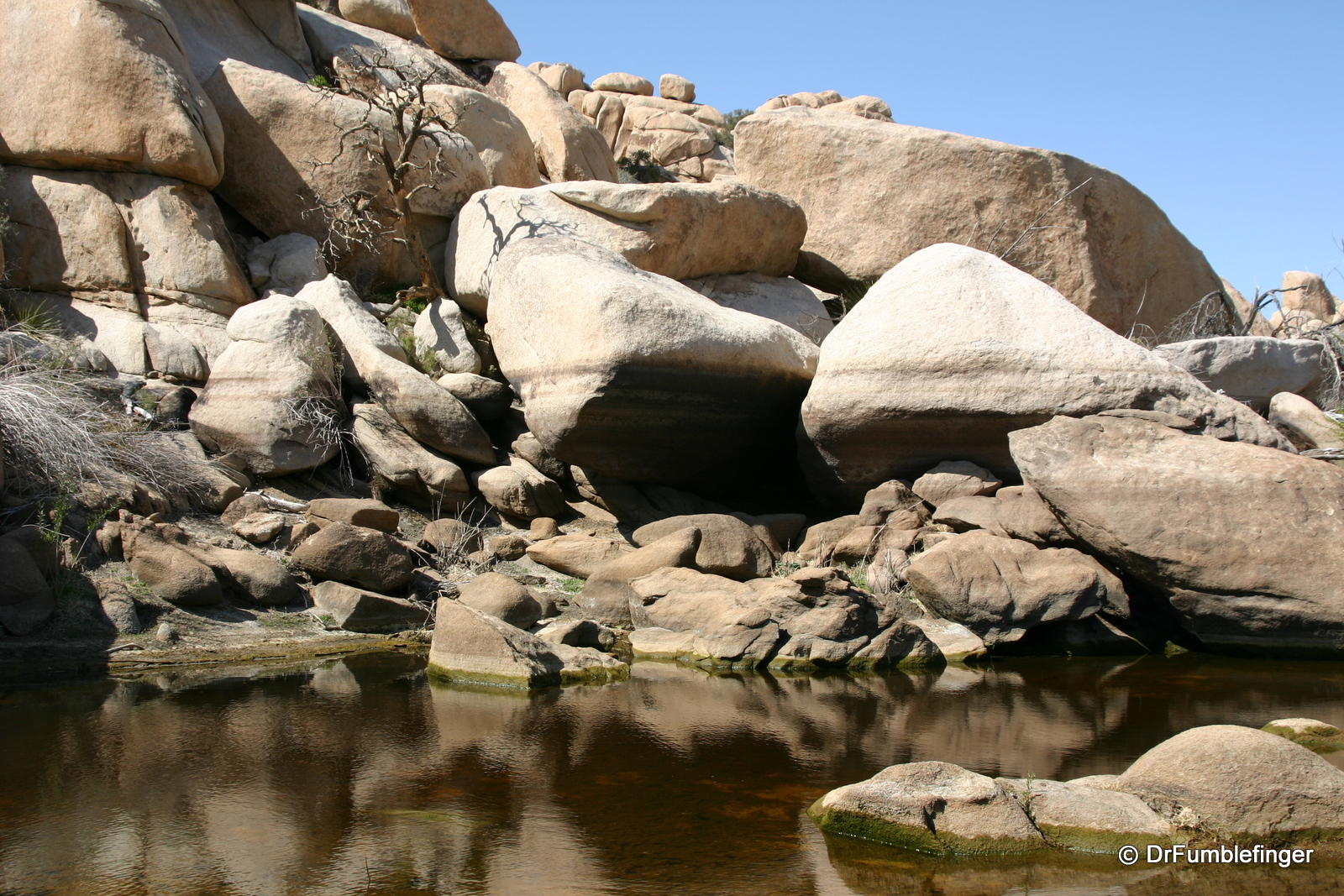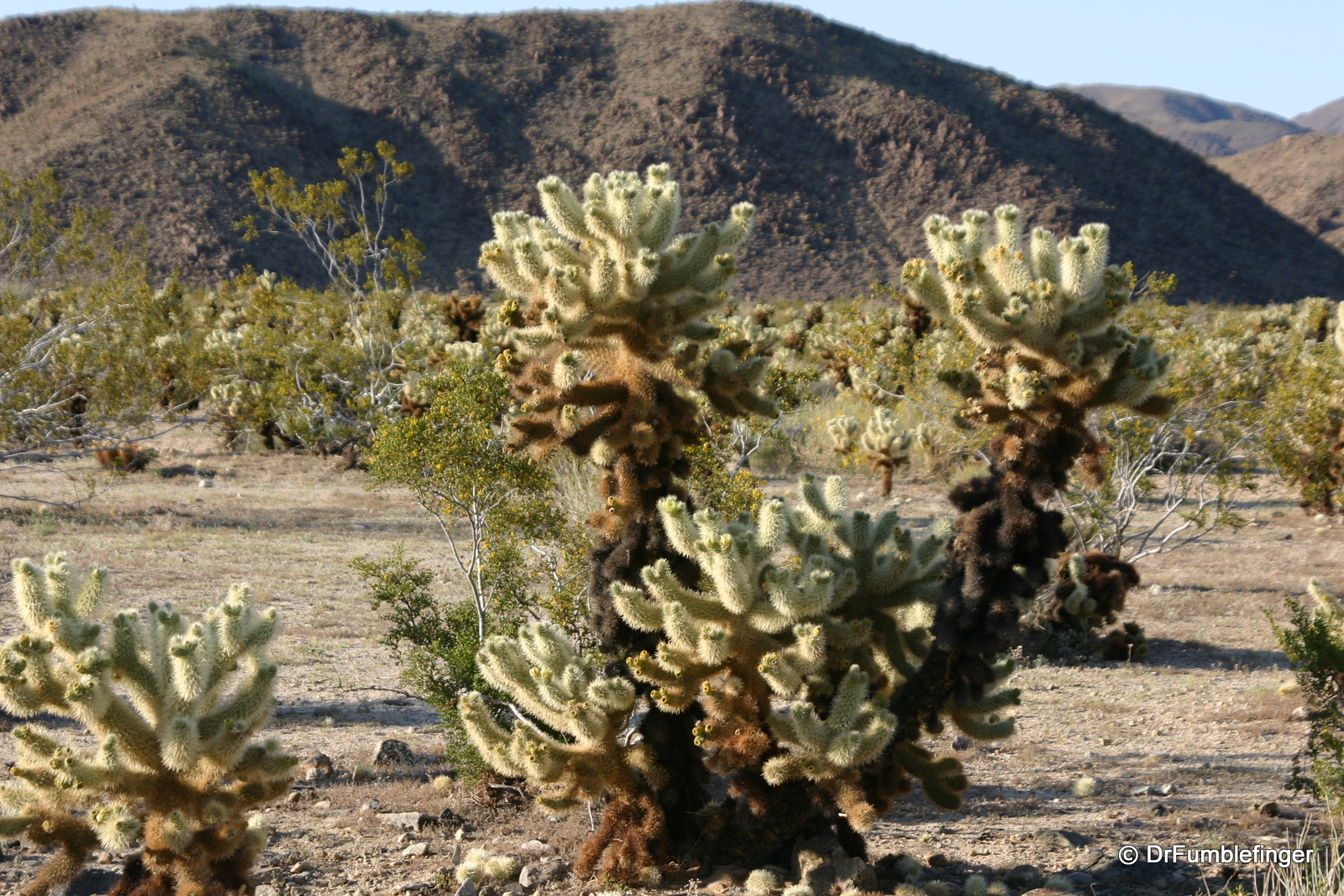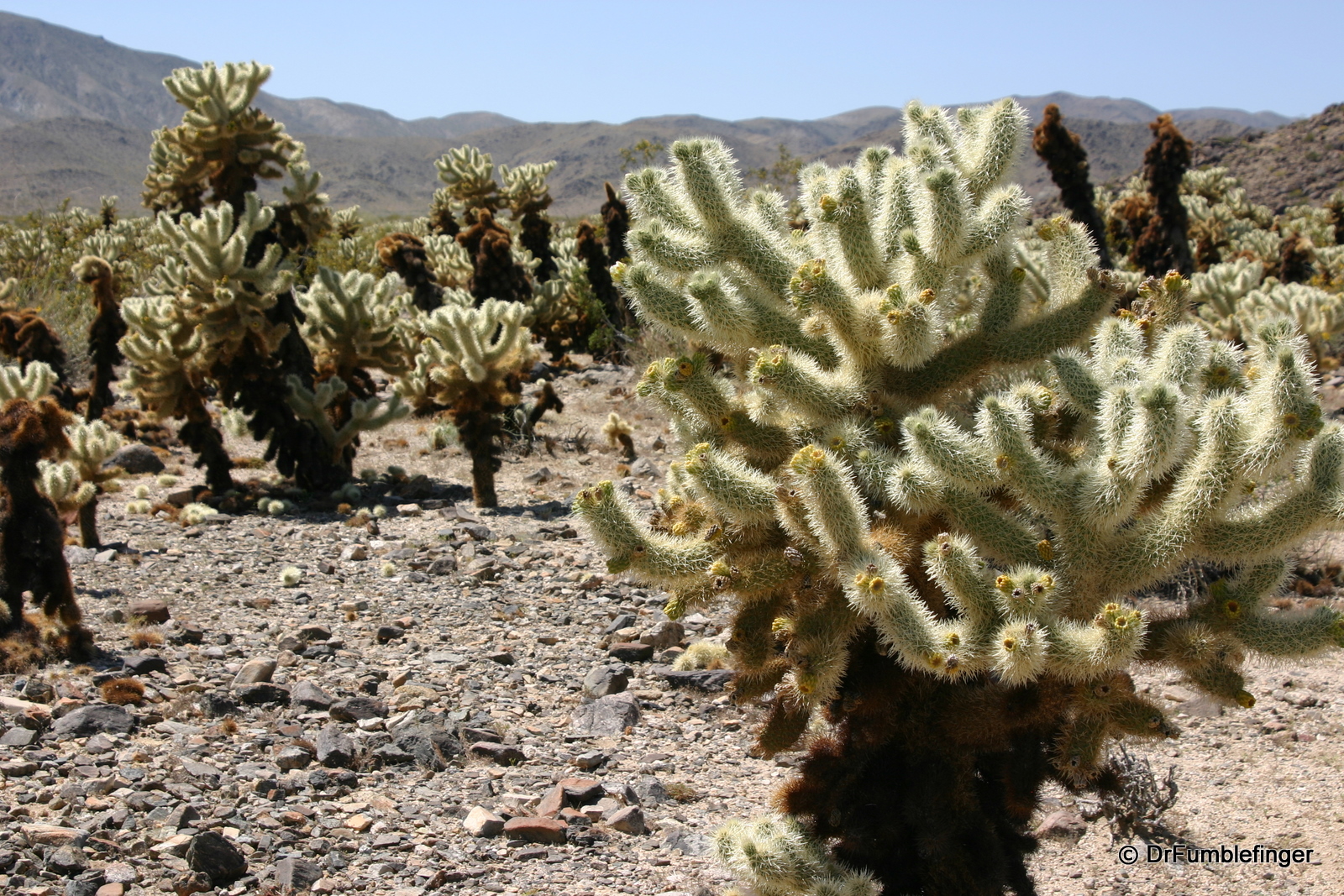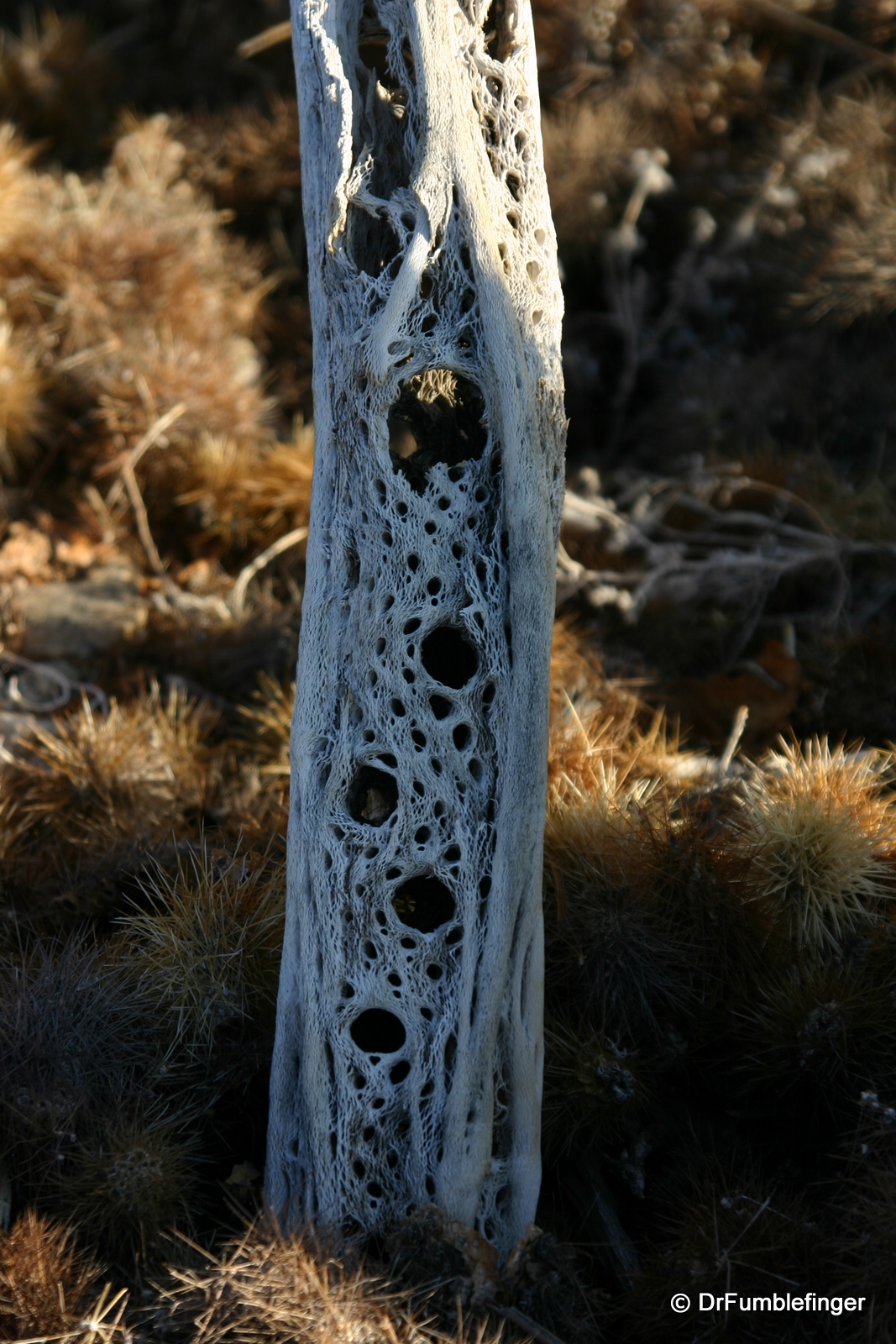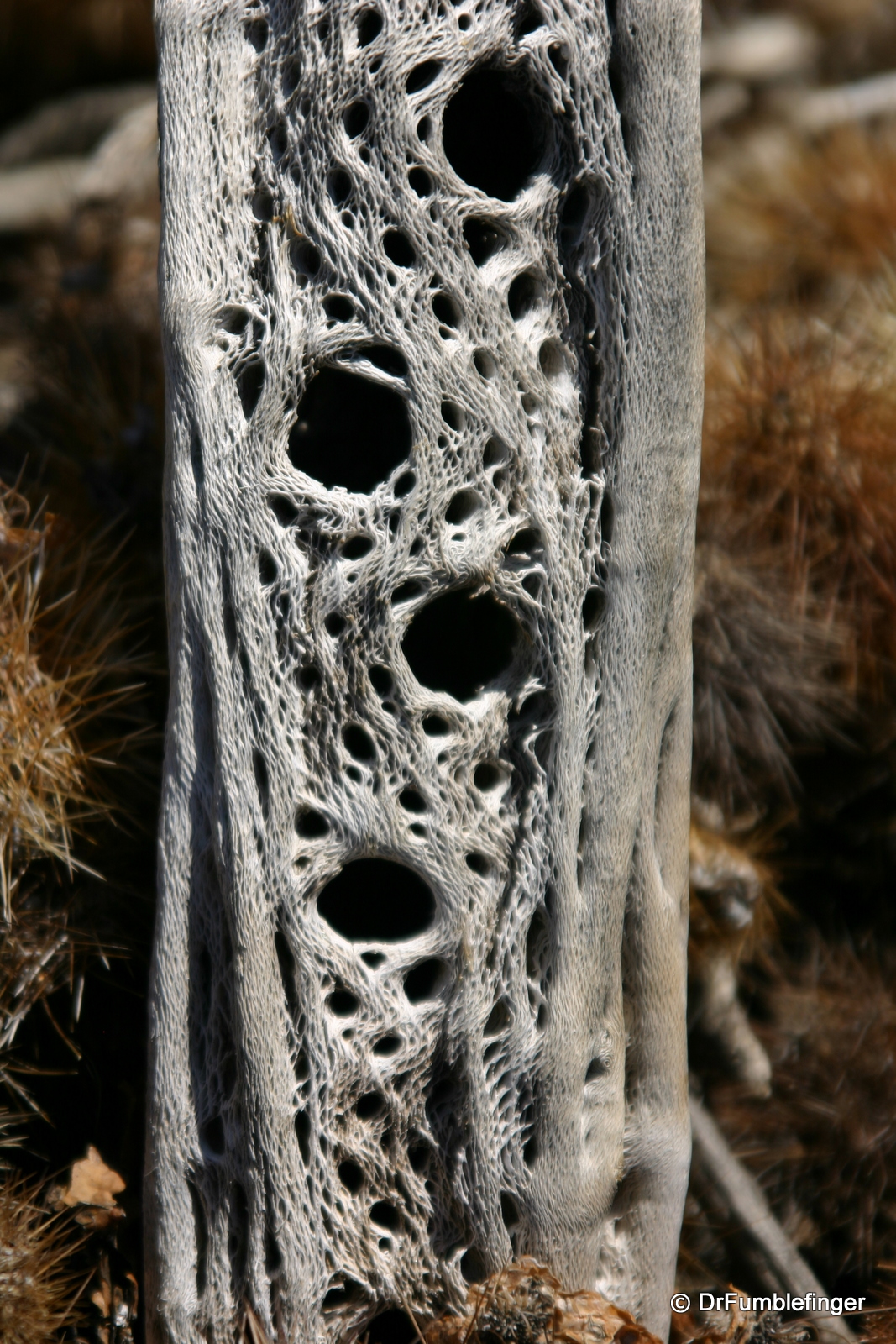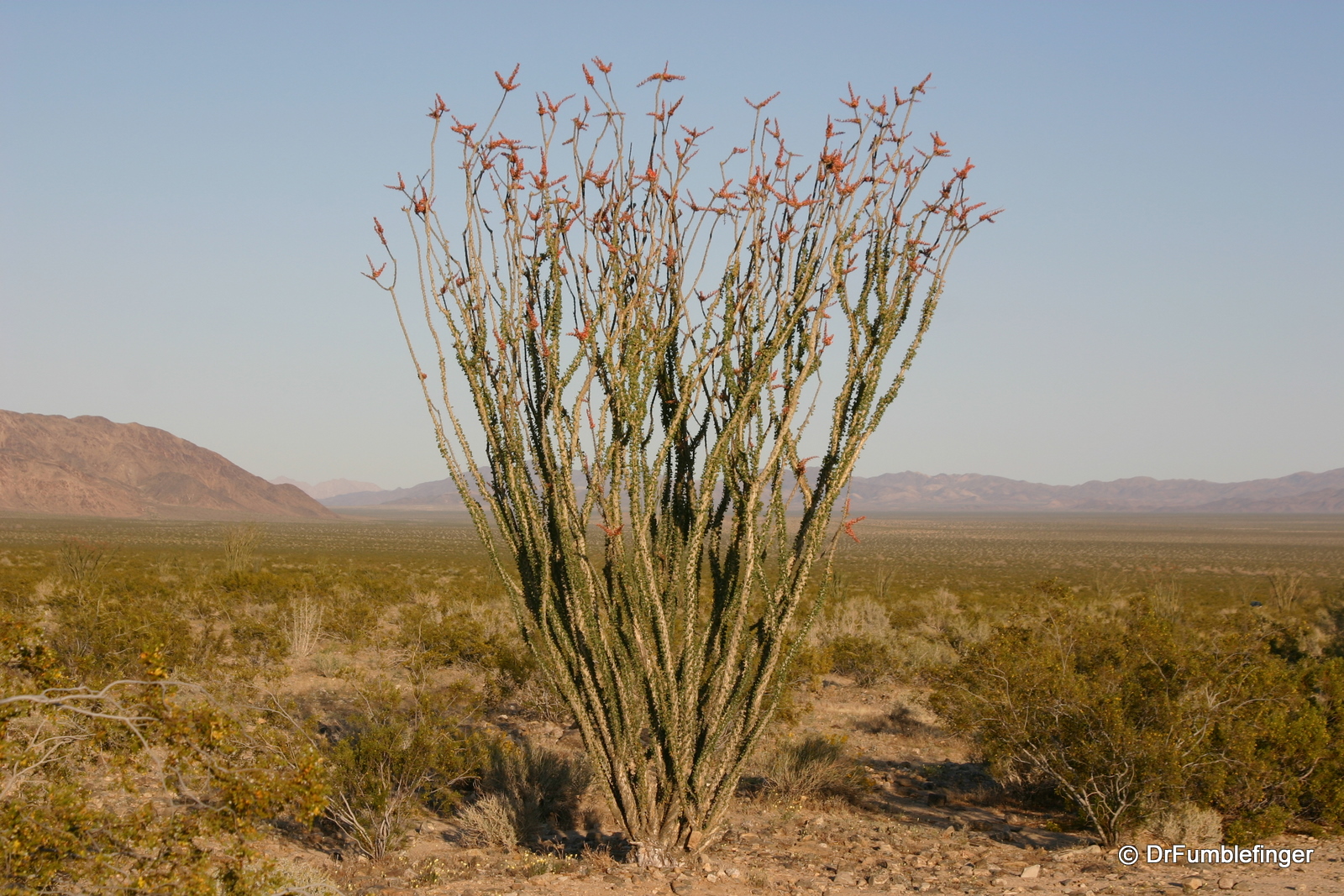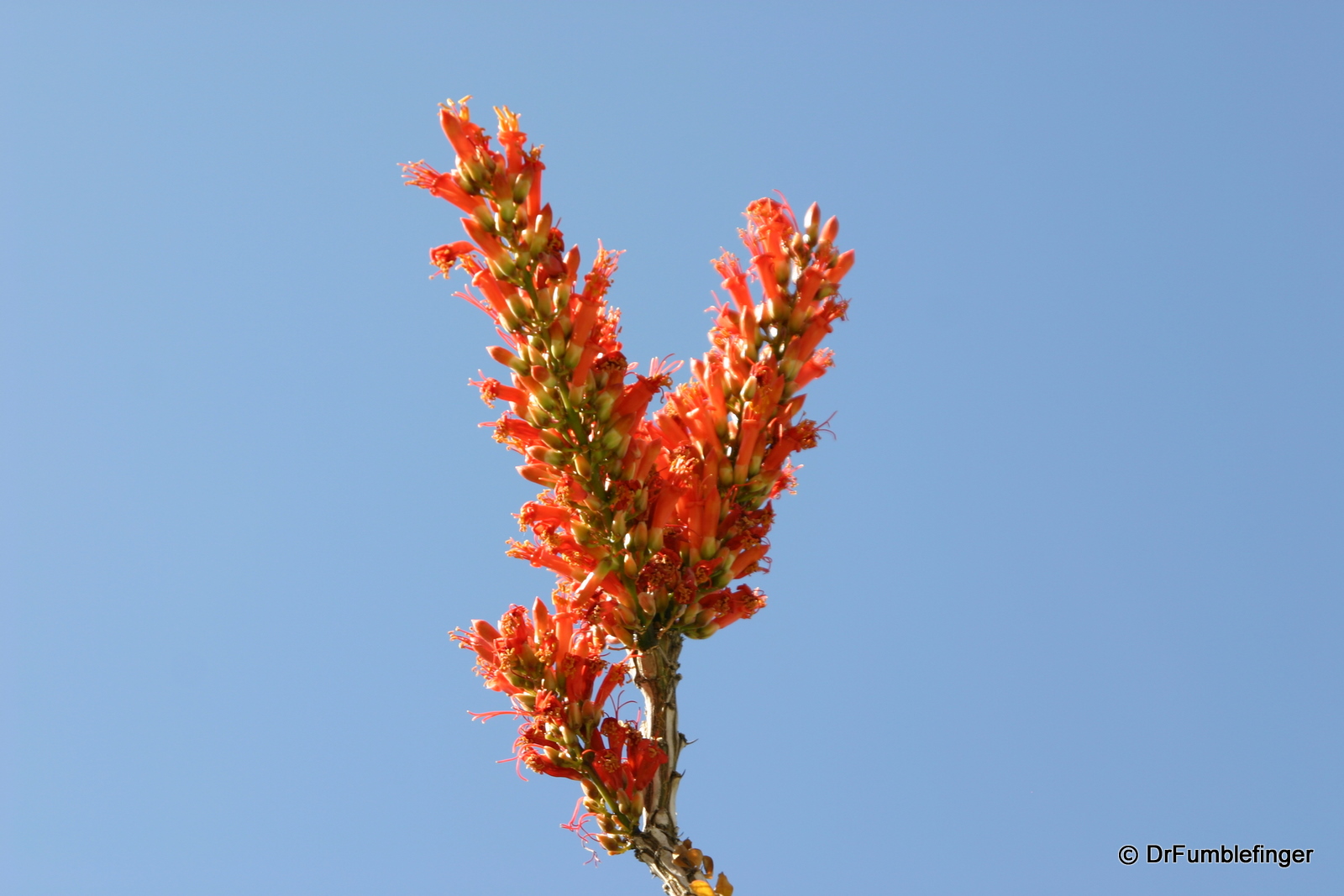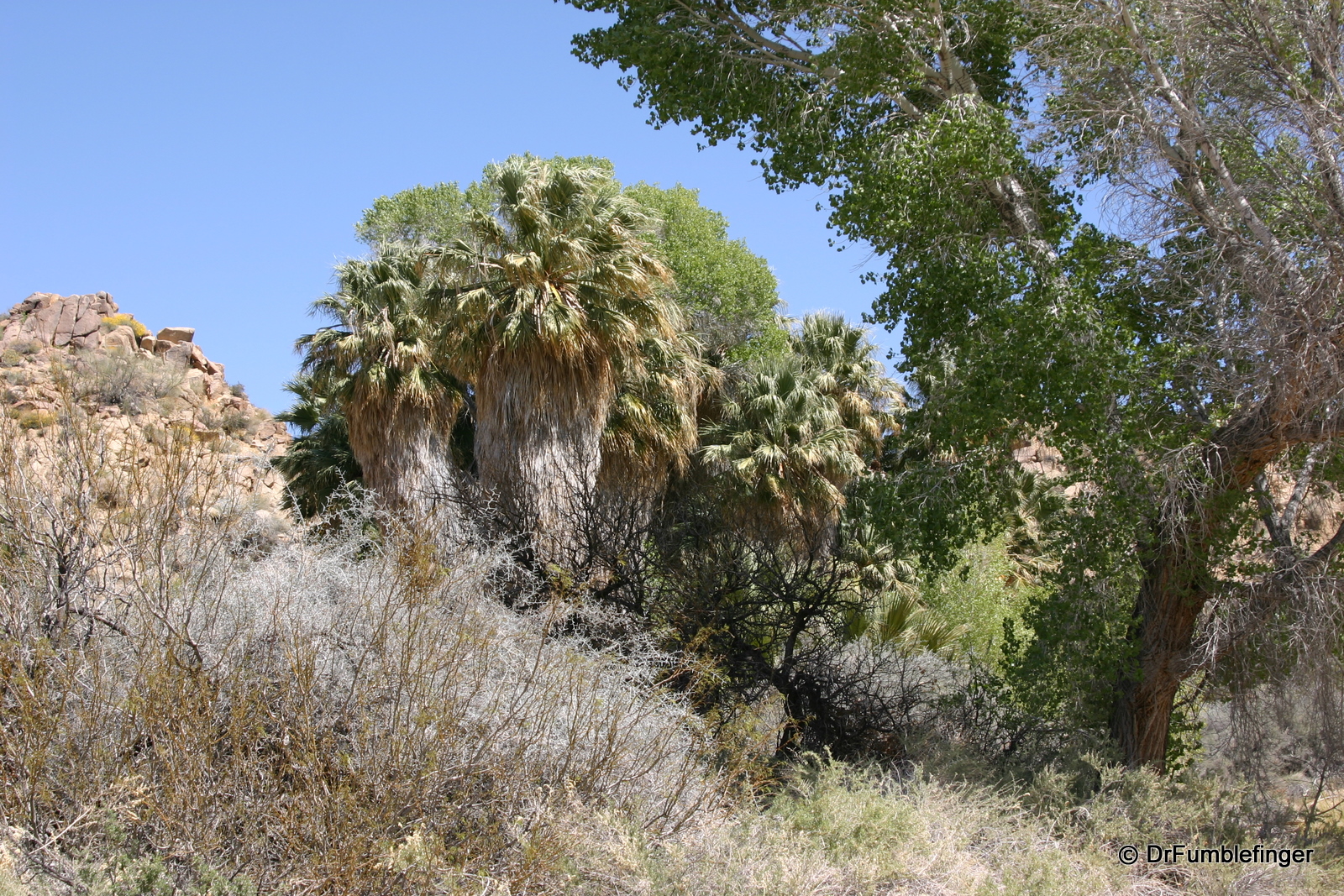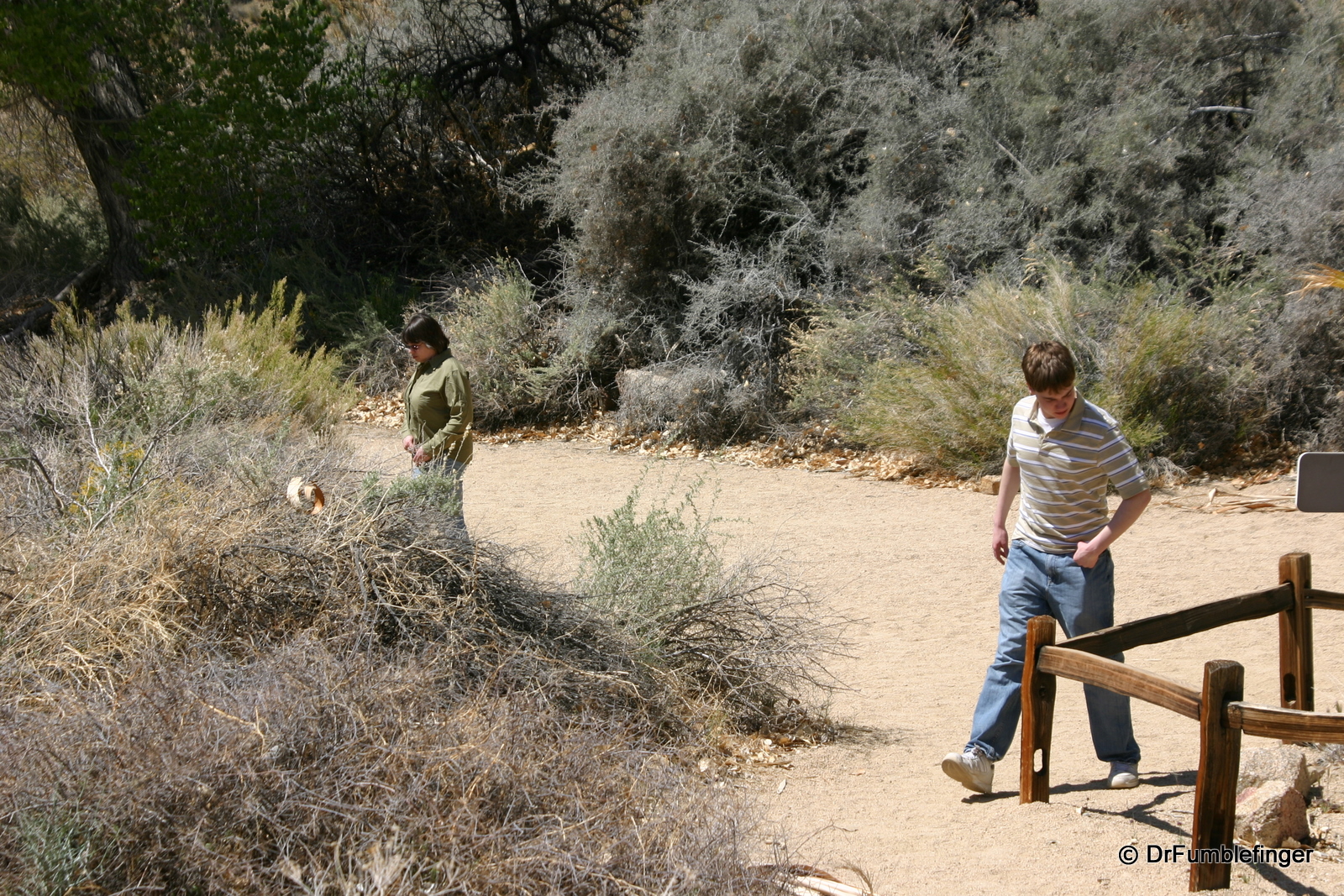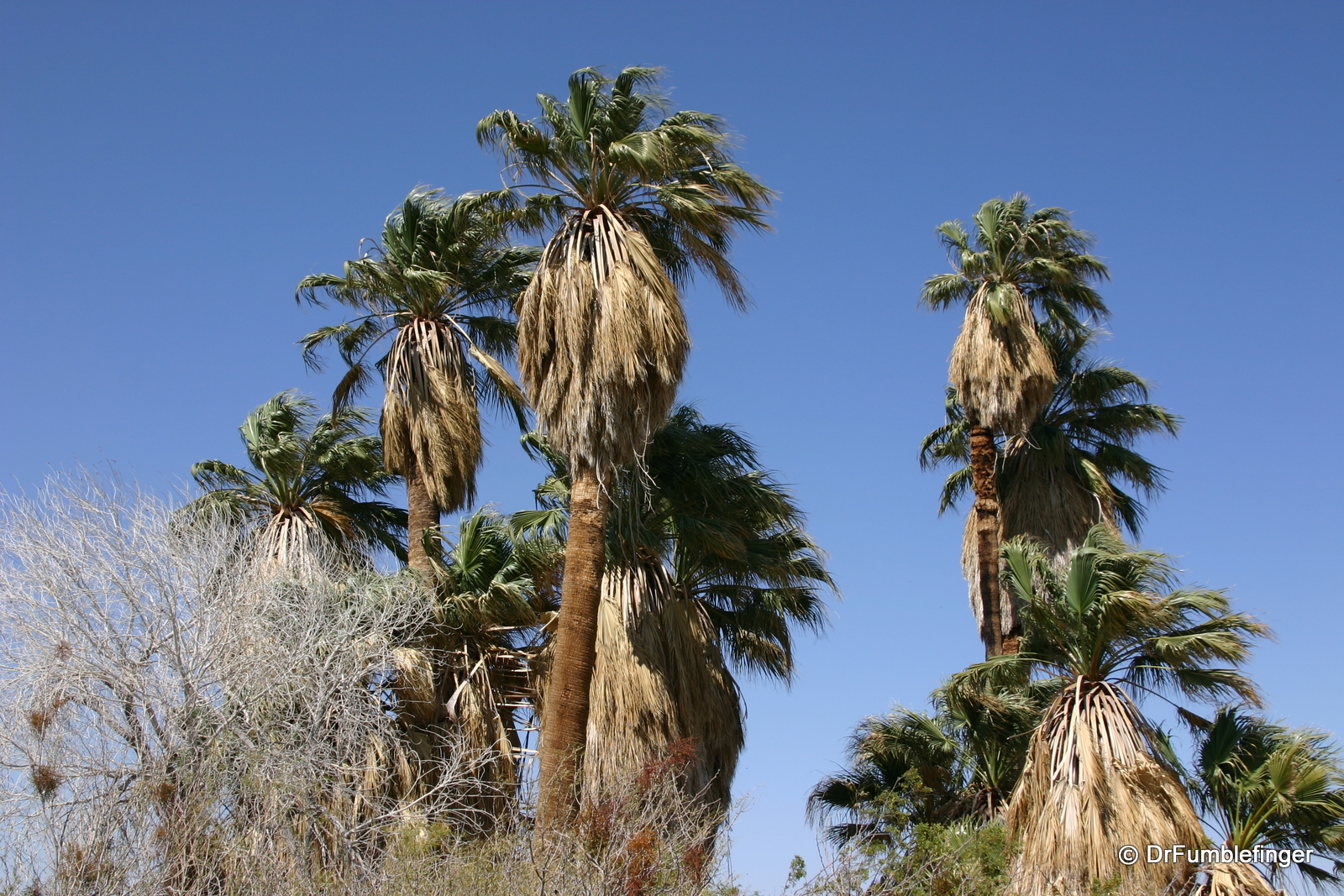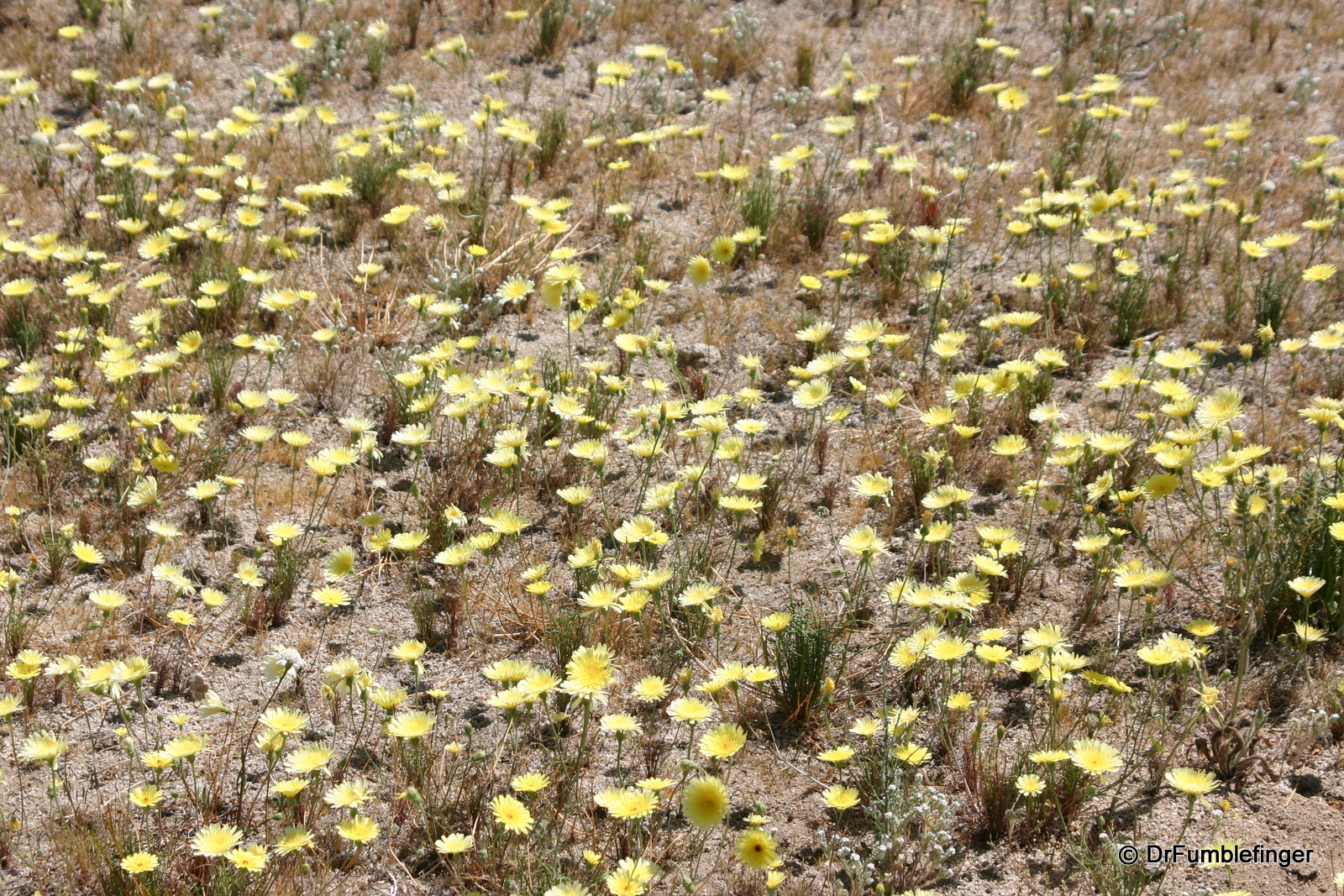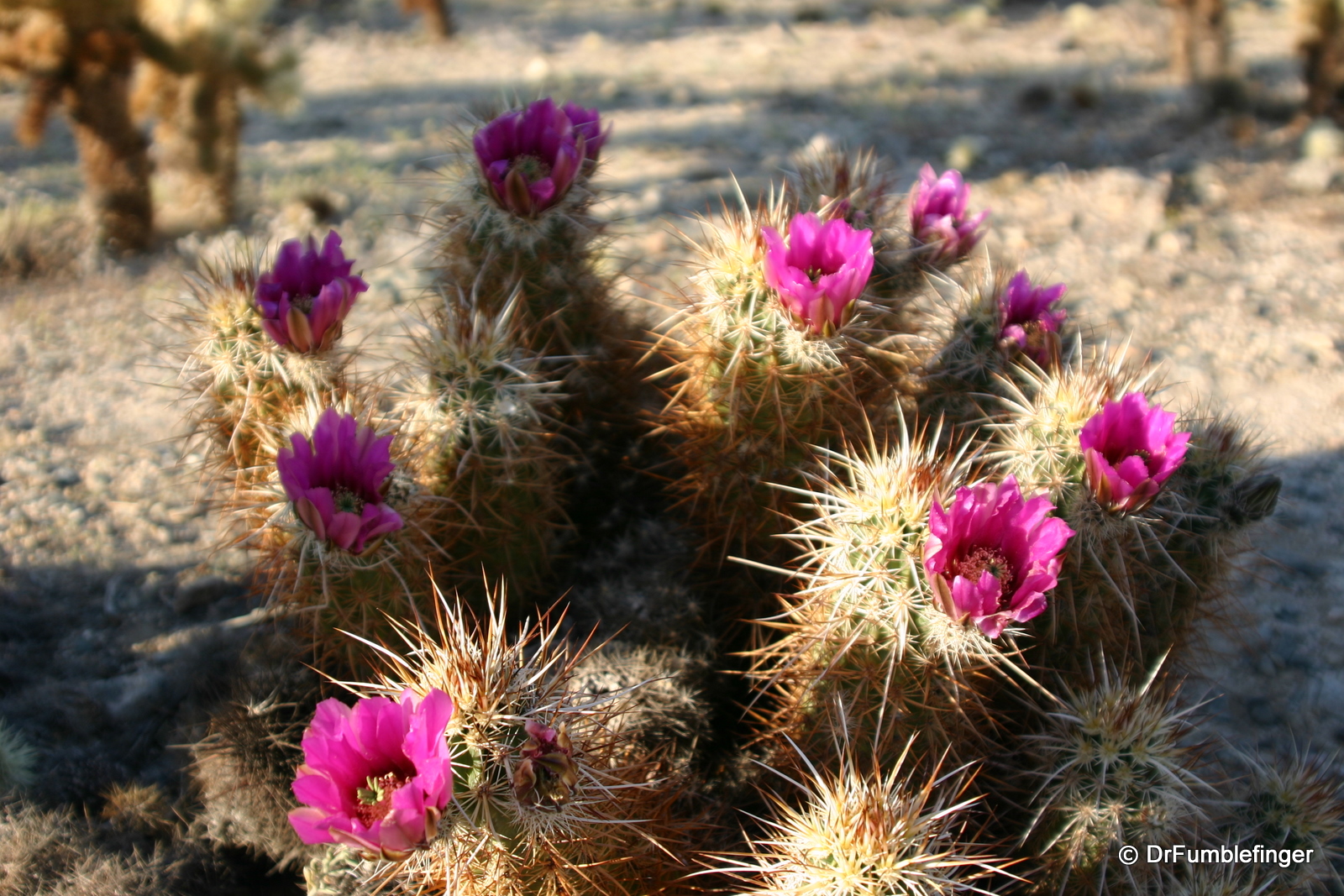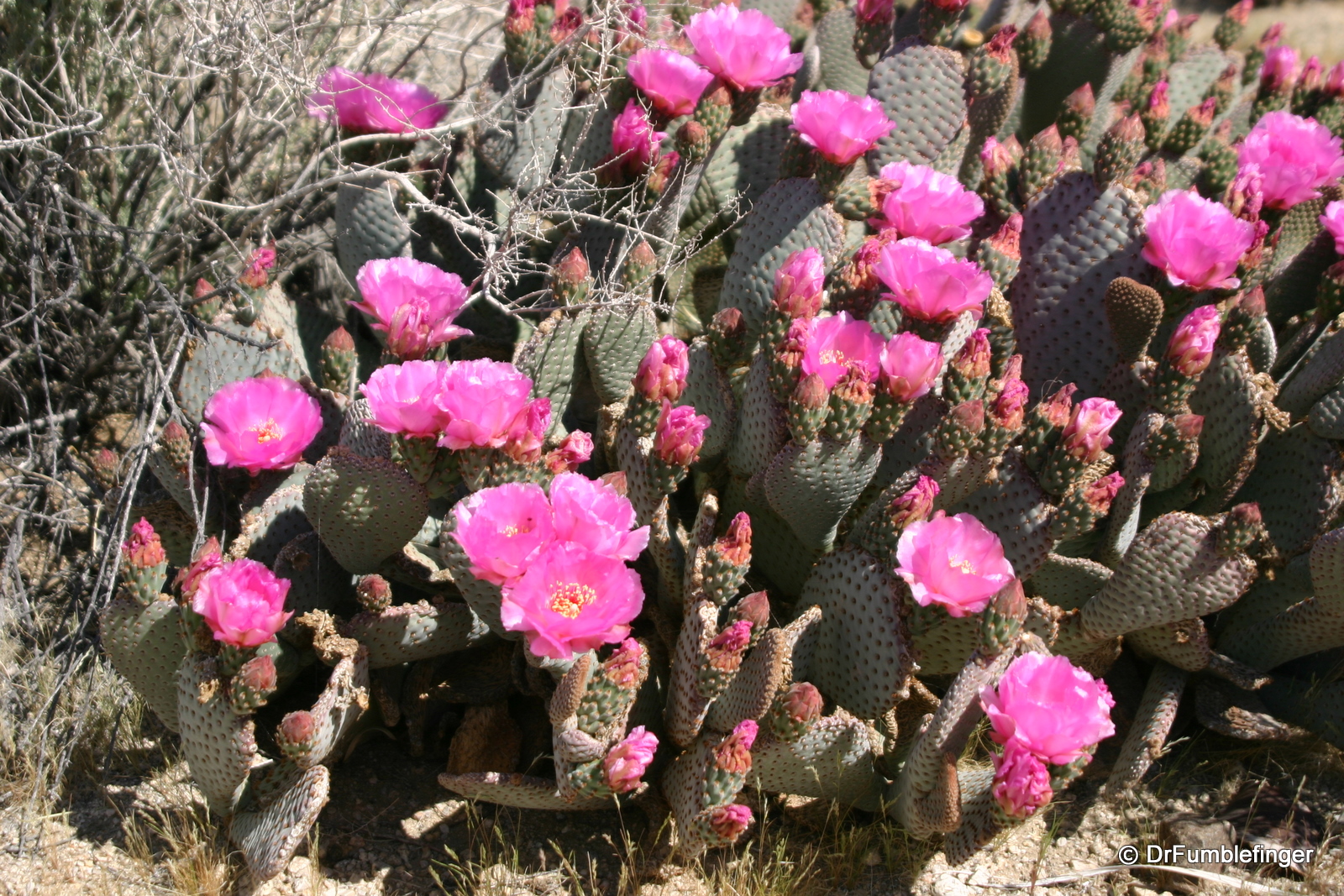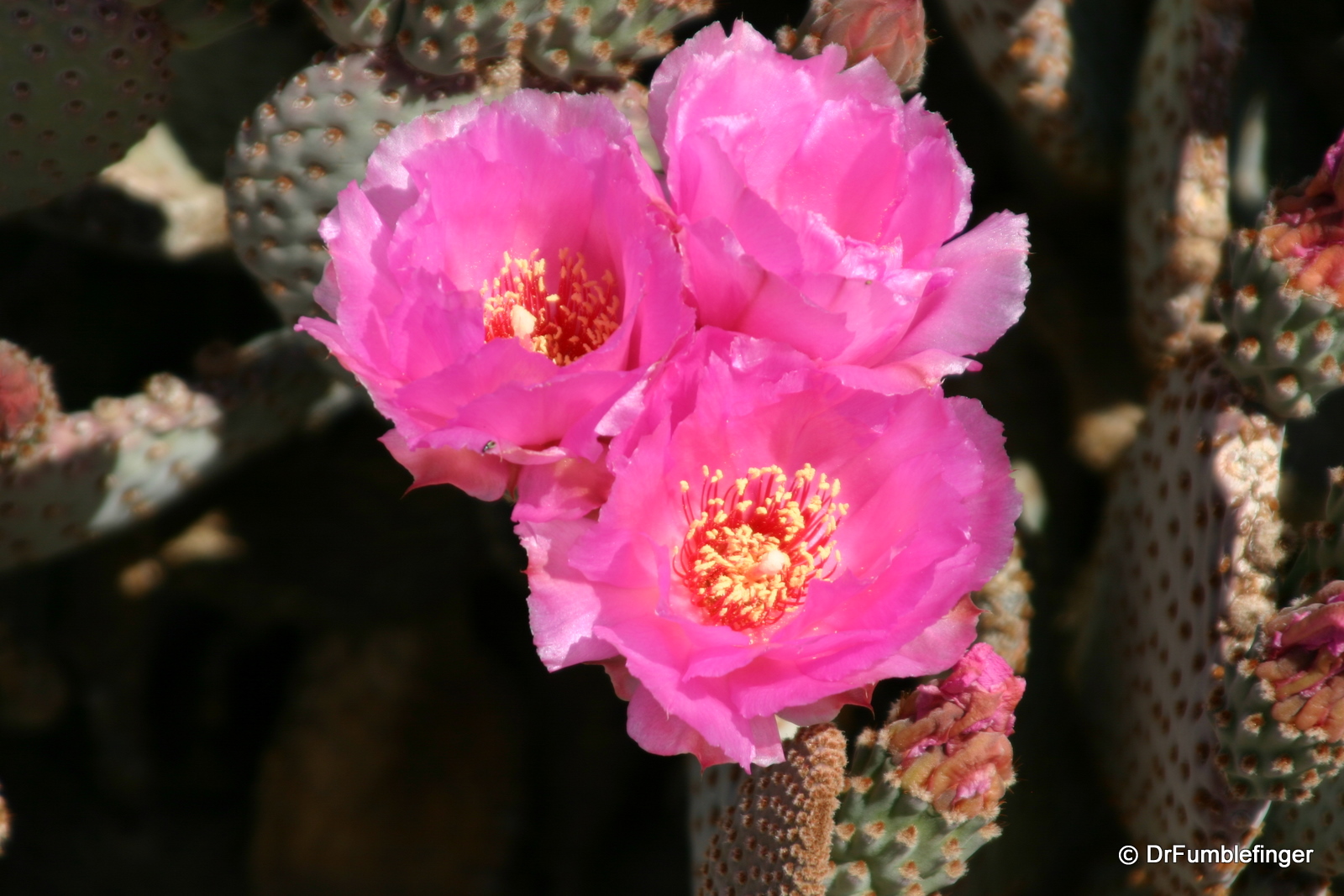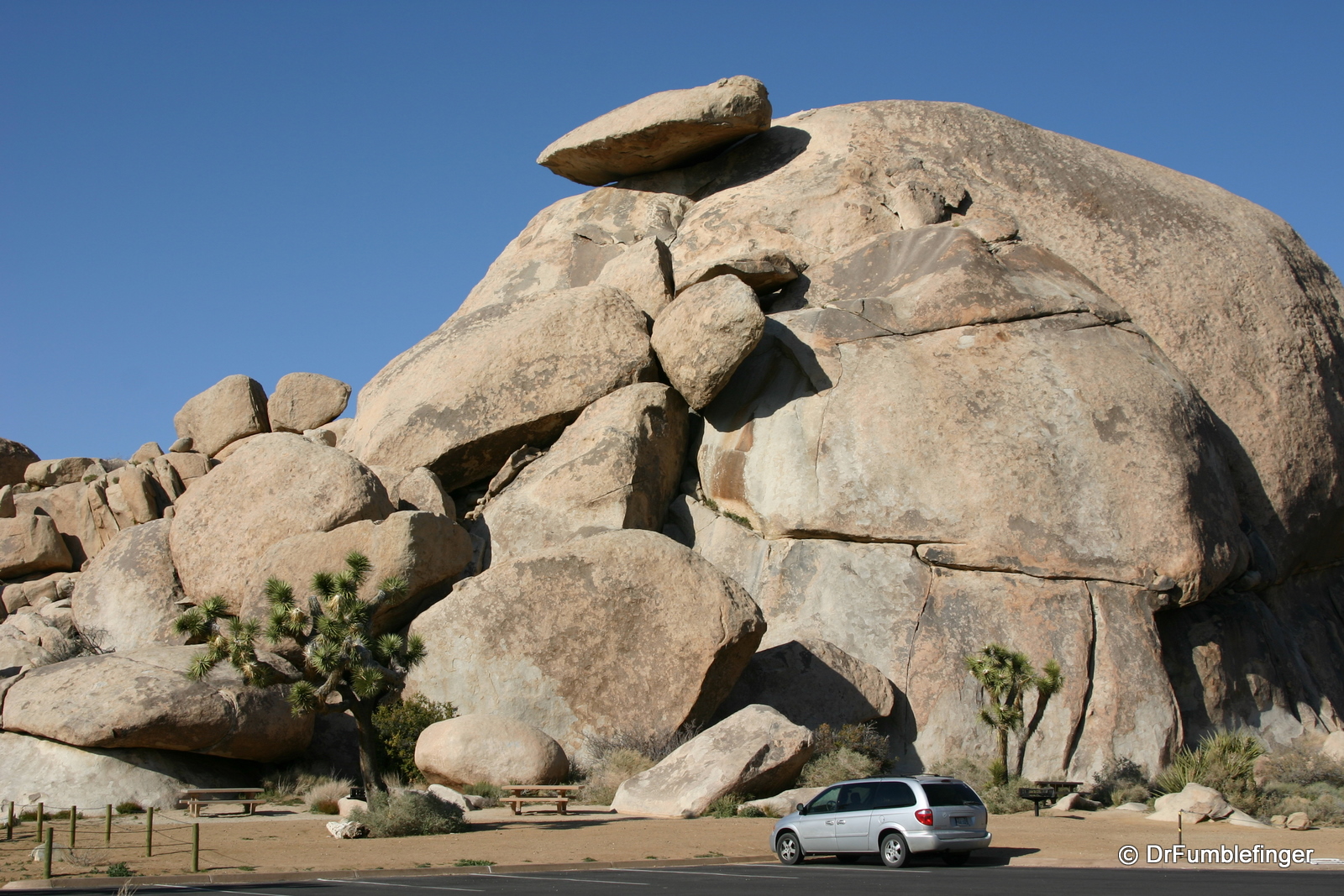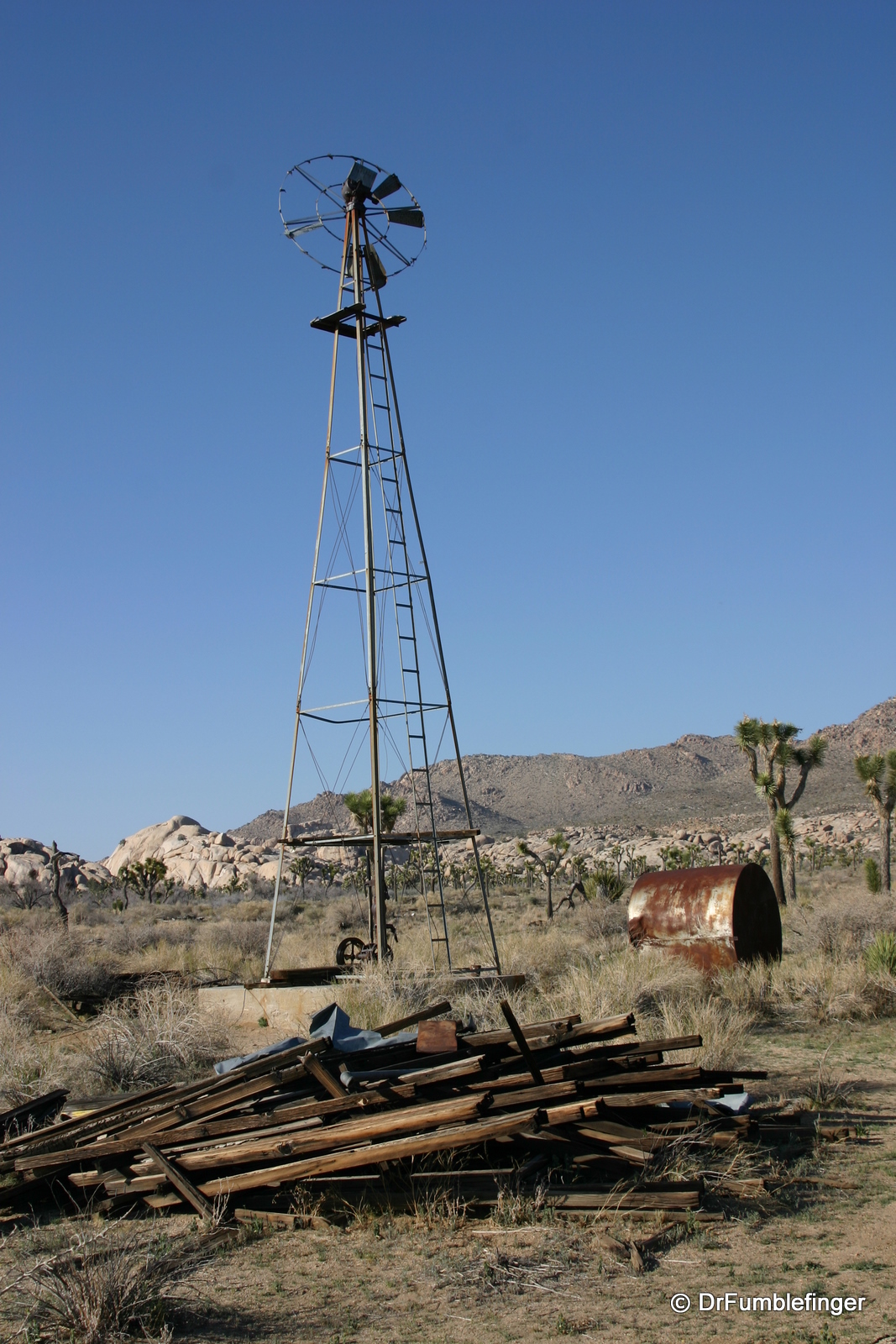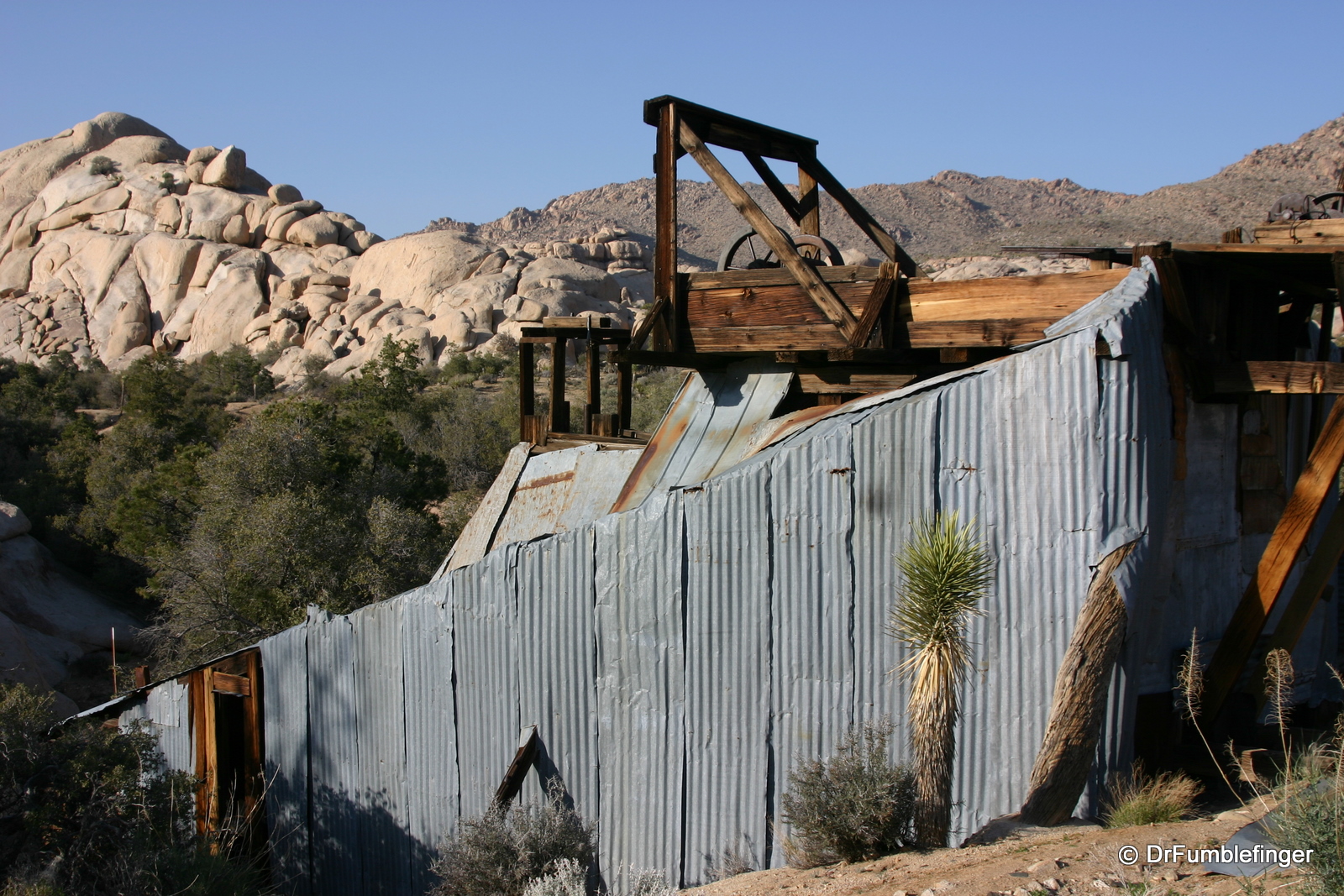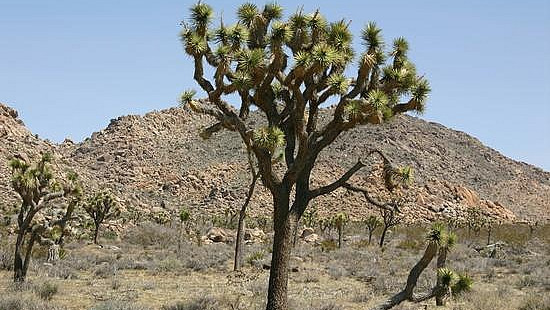
There’s something about the sight of “trees” (even if they’re just “pseudotrees”) that I find appealing and relaxing. For example, I think the Sonoran desert around Tucson is far more interesting and beautiful because of its giant saguaro cacti. The same is true of the thick growth of ‘Joshua Trees’ in the high Mojave Desert of California and Nevada.
I first visited Joshua Tree in 1983 when it was still a National Monument (declared so three quarters of a century ago by FDR in 1936 & received National Park status in 1994). The memories of broad vistas, desert vegetation, unusual rock formations and Joshua trees remained with me and I’ve returned many times since including on a two night backpacking trip into the desert the mid-1990s (something I’ll never do again because you have to carry all your water — and going to the bathroom after dark is filled with a hazardous maze of spiny cacti).
We recently returned to the Palm Springs area with our teenage sons during Spring break to enjoy the warm Palm Springs weather, beautiful views of the snow-capped San Jacinto mountains, and the wildflowers and unique vistas of Joshua Tree National Park. Springtime is a great time to go because the weather is still pleasant — not the oven hot experience of summer — and the desert is decorated with blooming wildflowers and cacti.

Teddy Bear Cholla, Joshua Tree NP
Two great deserts meet at Joshua Tree National Park, whose ecosystems are primarily related to elevation. The Colorado Desert occupies the lower altitude (<3000 ft) eastern half of the park and is dominated by the creosote bush with admixed ocotillo and jumping cholla cactus. The higher, cooler and slightly moister Mojave Desert is the habitat of the “Joshua tree”, extensive stands of which occur throughout the western half of the park. Five oasis of fan palms are present in the park indicating those rare areas in which water is found year round and, as such, these are good places to spot wildlife early or late in the day. The park encompasses some of the most interesting geologic displays in California’s deserts including uniquely shaped granite monoliths and rugged mountains.
There is one main road that leads through the park and if your time is limited it’s worth just driving through and stopping at some of it’s highlights. But the best way to experience the desert is to walk through it. Appreciate its vistas, feel the breeze in your face, and see up close the diverse flowers, cacti and namesake Joshua Trees.

In spring blossoms are everywhere, Joshua Tree National Park
Joshua Trees: The Joshua tree is actually a giant lily (they can grow to over 40′ tall and live to 900 years of age). Joshua trees were useful for Native Americans; tough leaves for baskets and sandals; spring time flower buds and seeds were food supplements. In the mid 19th century, Mormon migrants named the tree after the prophet Joshua, seeing its outstretched limbs as a guide leading them westward. In the late 19th century ranchers and miners arrived in the area with hopes of ranching or mining. These homesteaders used the Joshua tree’s for fencing and corrals and fuel. They built dams to create water tanks and mined the earth in search of gold. They’re gone now, but you can explore a few petroglyphs and the ruins of pioneer home-sites and mines in the park.
Many don’t see the appeal of the desert and I think enjoying it is somewhat of an acquired taste. While at first life in a desert ecosystem appears stark, if you explore a little you will see how complicated and intricate the plant and animal life are and how beautifully it all fits together. As the limiting aspect of desert life is water, everything works around its conservation, be it the cacti or kangaroo rats. And a wonderful place to pull out some binoculars is around an oasis or watering hole; you’re likely to see many birds, coyotes, and even bighorn sheep. A spring shower will result in the sudden appearance of a blanket of wildflowers. I enjoy studying the desert but not in the heat of summer.
So if you’re near Palm Springs, especially in the spring, take the hour or so drive to see this National Park.
(Click on thumbnails to enlarge, right arrow to advance slideshow)
